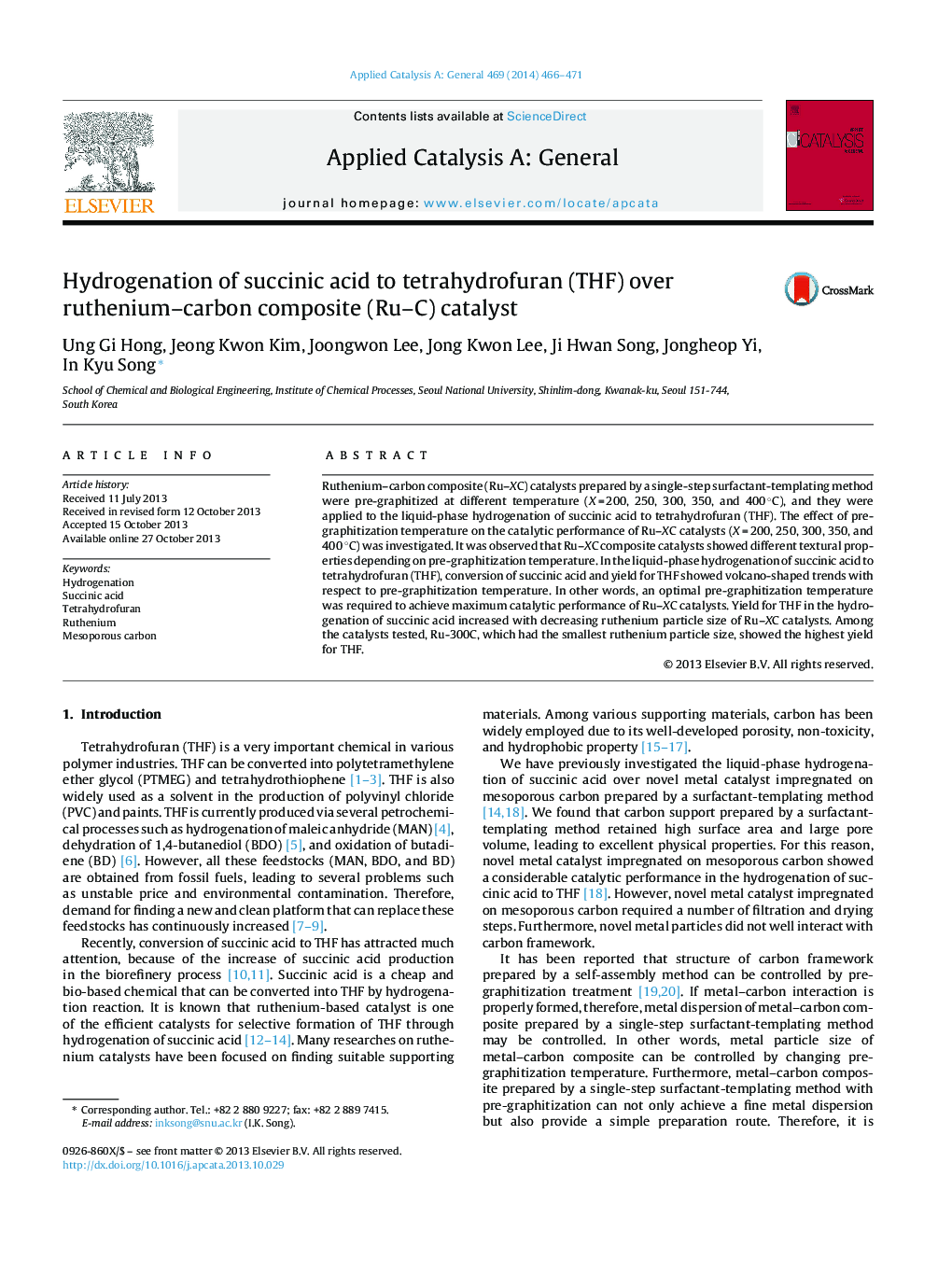| Article ID | Journal | Published Year | Pages | File Type |
|---|---|---|---|---|
| 40199 | Applied Catalysis A: General | 2014 | 6 Pages |
•Ruthenium–carbon (Ru–XC) catalysts were pre-graphitized at different temperature.•Liquid-phase hydrogenation of succinic acid to tetrahydrofuran (THF) was conducted.•An optimal pre-graphitization temperature was required to obtain maximum THF yield.•Yield for THF increased with decreasing ruthenium particle size of Ru–XC catalysts.
Ruthenium–carbon composite (Ru–XC) catalysts prepared by a single-step surfactant-templating method were pre-graphitized at different temperature (X = 200, 250, 300, 350, and 400 °C), and they were applied to the liquid-phase hydrogenation of succinic acid to tetrahydrofuran (THF). The effect of pre-graphitization temperature on the catalytic performance of Ru–XC catalysts (X = 200, 250, 300, 350, and 400 °C) was investigated. It was observed that Ru–XC composite catalysts showed different textural properties depending on pre-graphitization temperature. In the liquid-phase hydrogenation of succinic acid to tetrahydrofuran (THF), conversion of succinic acid and yield for THF showed volcano-shaped trends with respect to pre-graphitization temperature. In other words, an optimal pre-graphitization temperature was required to achieve maximum catalytic performance of Ru–XC catalysts. Yield for THF in the hydrogenation of succinic acid increased with decreasing ruthenium particle size of Ru–XC catalysts. Among the catalysts tested, Ru-300C, which had the smallest ruthenium particle size, showed the highest yield for THF.
Graphical abstractFigure optionsDownload full-size imageDownload high-quality image (69 K)Download as PowerPoint slide
